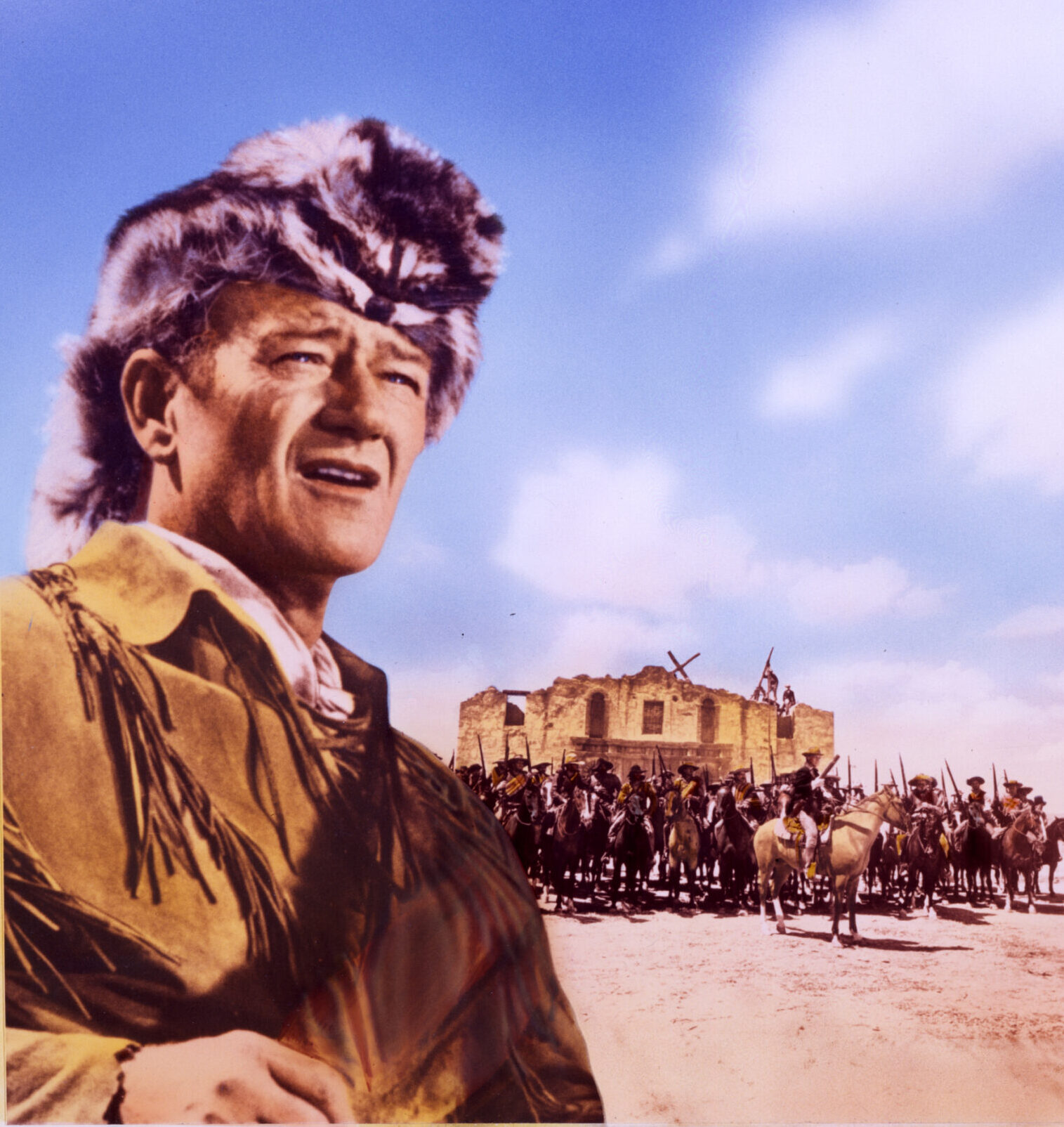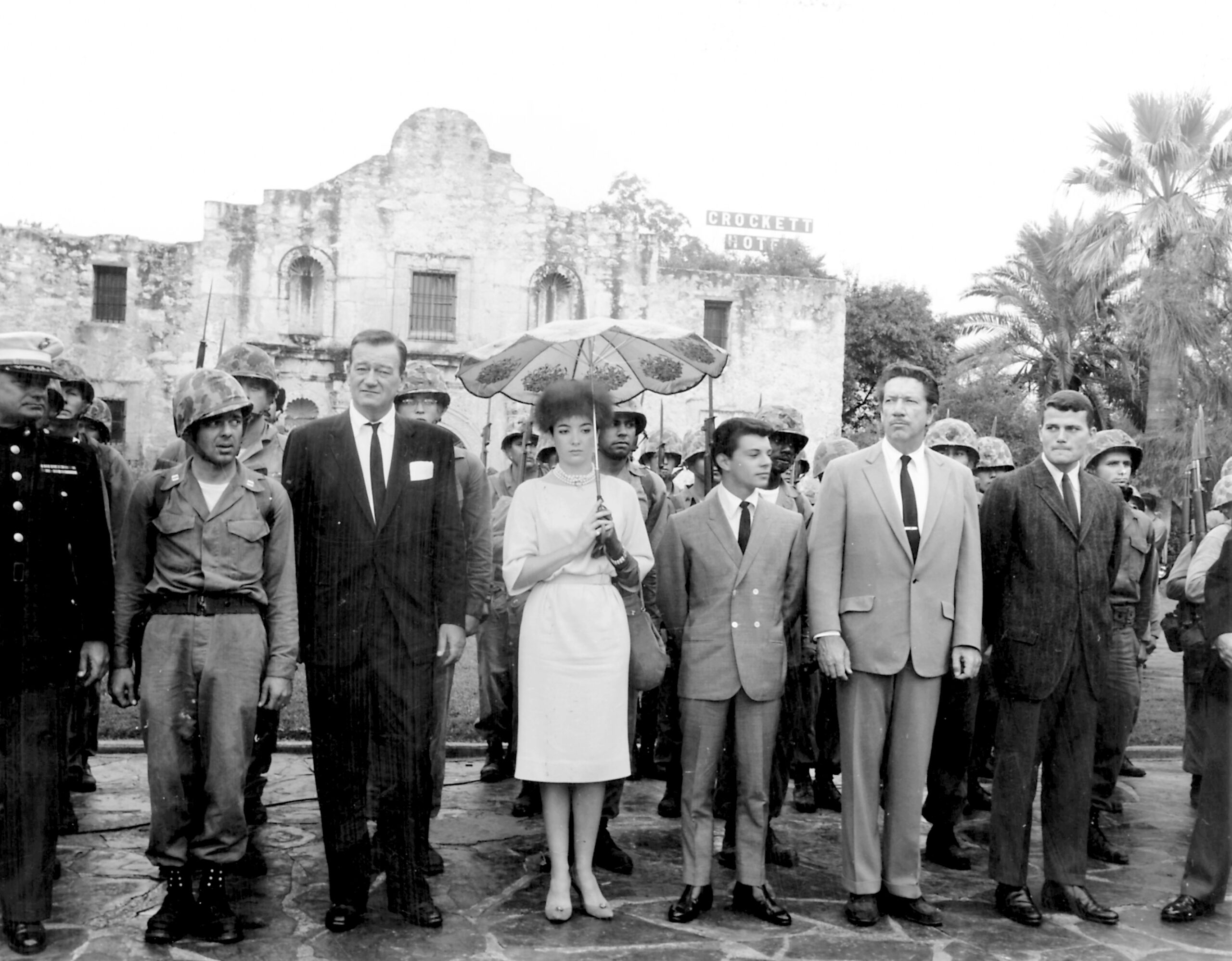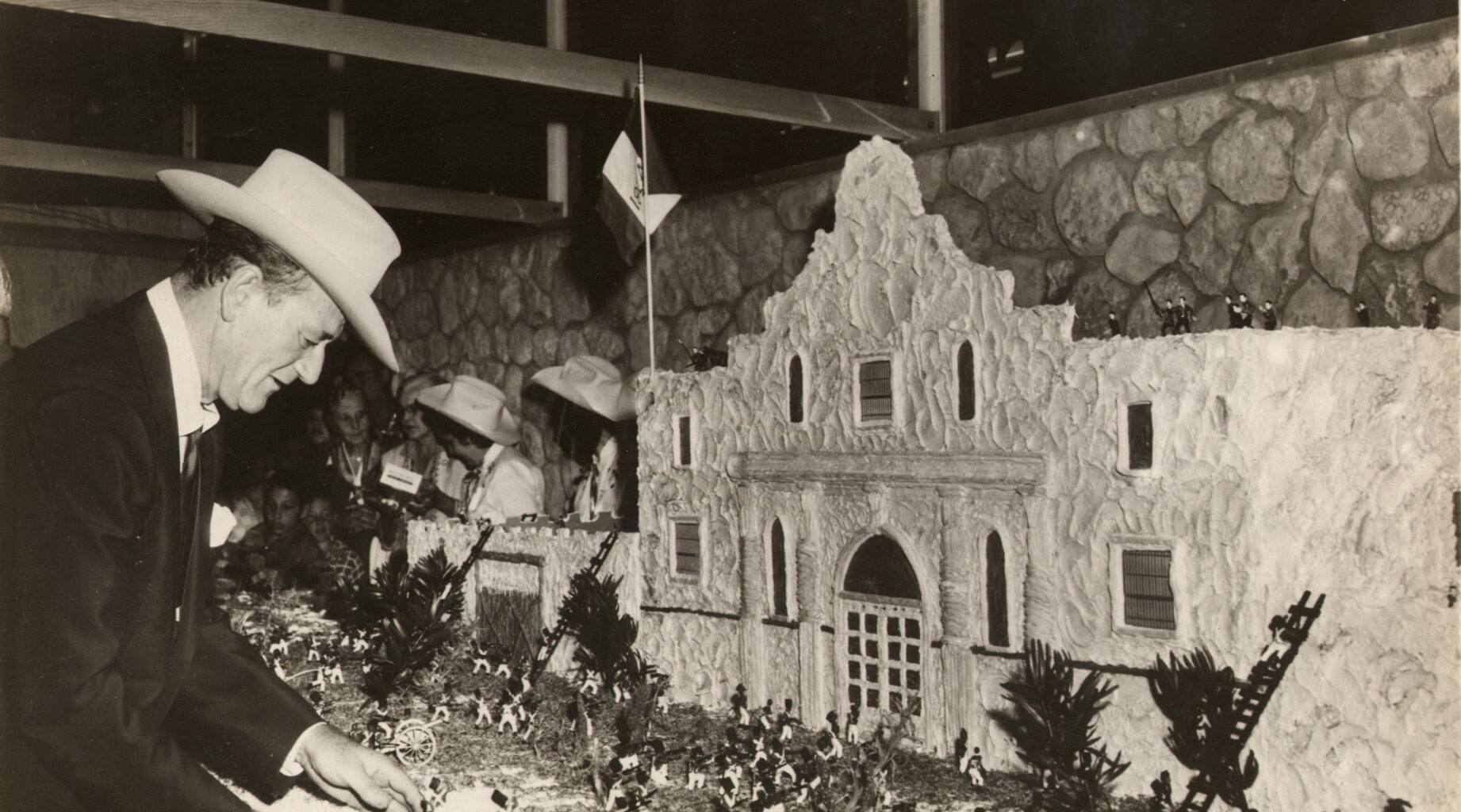Actor John Wayne’s 14-year quest to get the Shrine of Texas Liberty’s story on the big screen culminated in a three-day premiere party in the historical site’s hometown.
Hollywood came to San Antonio 65 years ago to celebrate Wayne’s $12 million epic “The Alamo,” which had its world premiere Oct. 24, 1960, at Woodlawn Theatre on Fredericksburg Road.
 File Photo
File Photo
The premiere brought the film’s stars back to Texas, where the movie was shot in late 1959, newspaper archives show. The film’s three-month shoot took place on a set dubbed Alamo Village that was built outside Brackettville, about 100 miles west of San Antonio.
Wayne, who played Davy Crockett in the film, also directed and produced it. Other stars include Richard Widmark, Richard Boone, Frankie Avalon and Chill Wills.
The premiere in 1960 wasn’t San Antonio first time hosting movie stars.
The Oscar-winning silent movie “Wings” was filmed in late 1926 at Fort Sam Houston, Camp Bullis, Kelly Field and various other locales in San Antonio and Bexar County, according to archives. Stars of the film, including Clara Bow, Charles “Buddy” Rogers and Richard Arlen, stayed at the St. Anthony Hotel downtown.
Among the other Hollywood films shot in San Antonio are “Cloak & Dagger,” “Selena” and “Miss Congeniality.”
 Cast members of the “The Alamo,” including, from left of helmeted soldier, John Wayne, Linda
Cast members of the “The Alamo,” including, from left of helmeted soldier, John Wayne, Linda
Cristal, Frankie Avalon, Richard Boone and Pat Wayne, pay tribute to the fallen defenders of the
Shrine of Texas Liberty during a ceremony Oct. 24, 1960, the day of the film’s world premiere. | File Photo
The possibility for more movies to be made in the Alamo City looks promising.
Gov. Greg Abbott in June signed Senate Bill 22, which establishes a fund to provide cash grants for projects filmed in Texas over the next decade. It will allow the state comptroller to deposit $300 million into the fund every two years until 2035.
The move, supporters said, will help lure more productions away from states that provide filmmaking incentives, including tax credits, rebates and grants.
For filmmakers like Wayne, such incentives were never within reach.
In a 2010 interview with the San Antonio Express-News, Wayne’s widow, Pilar, talked of her husband’s decadelong dedication to getting “The Alamo” made, ultimately using much of his personal wealth for the film’s production.
“He was very sentimental about it, and he didn’t care what it cost or anything,” she said.

